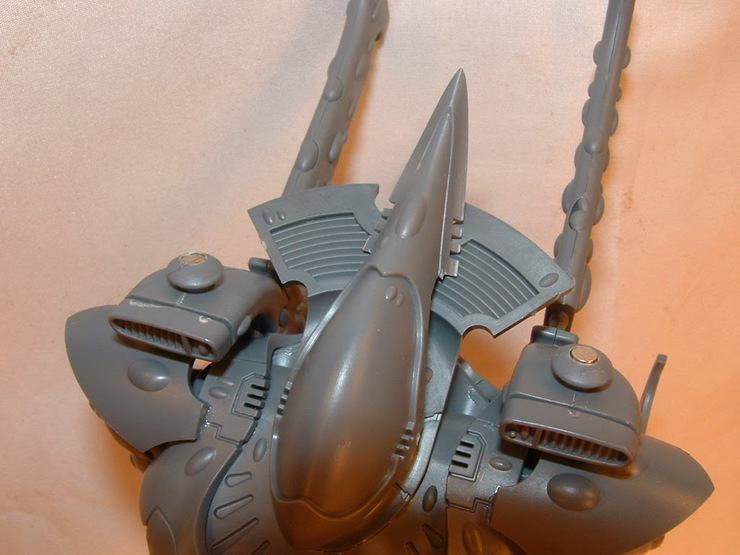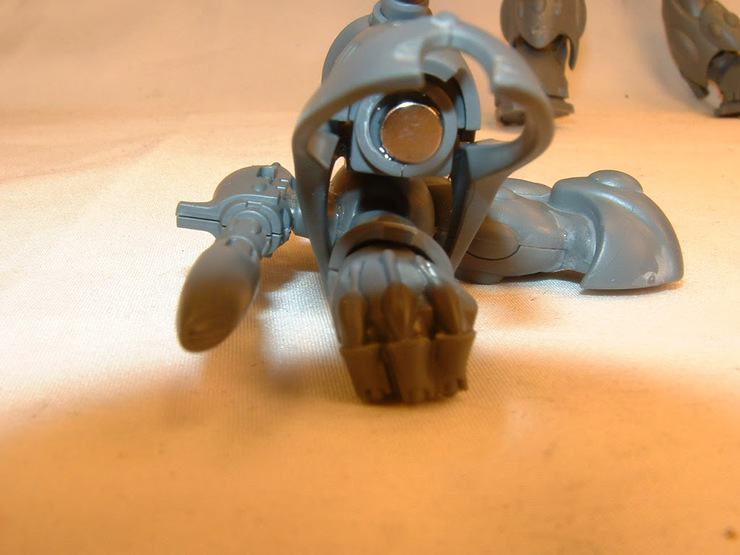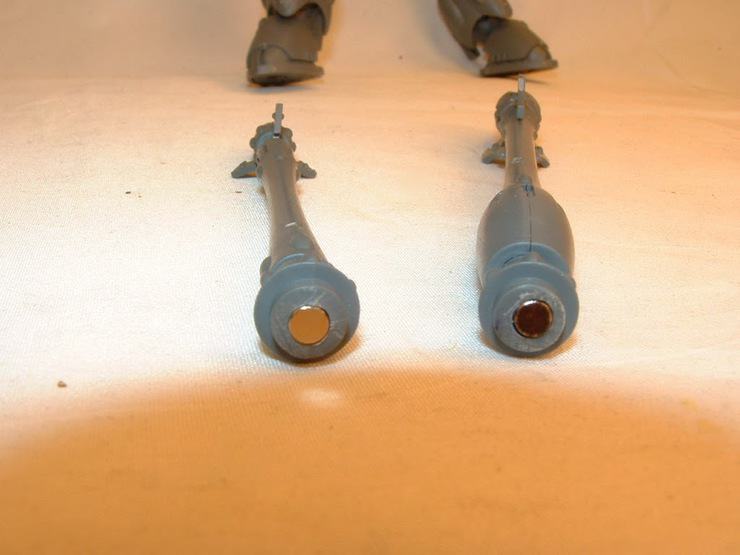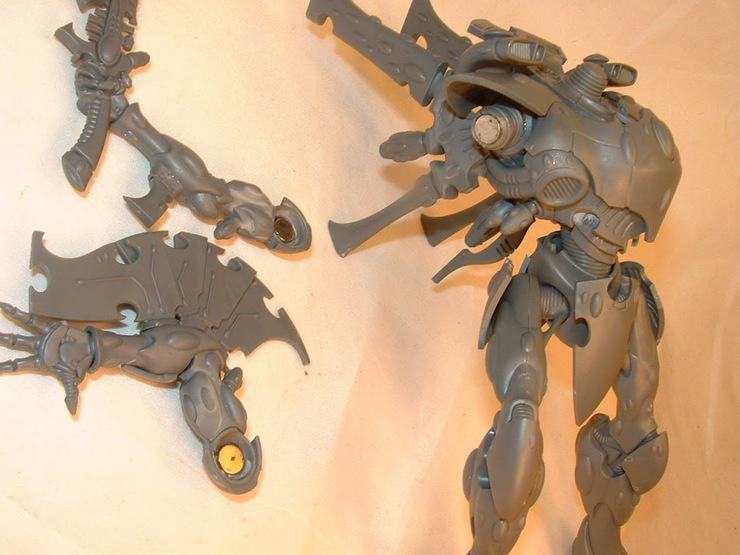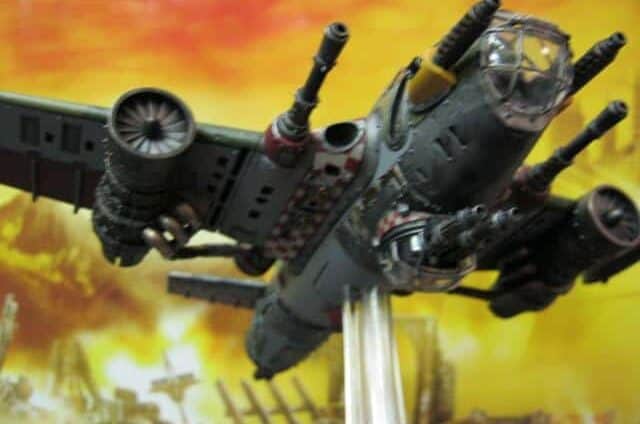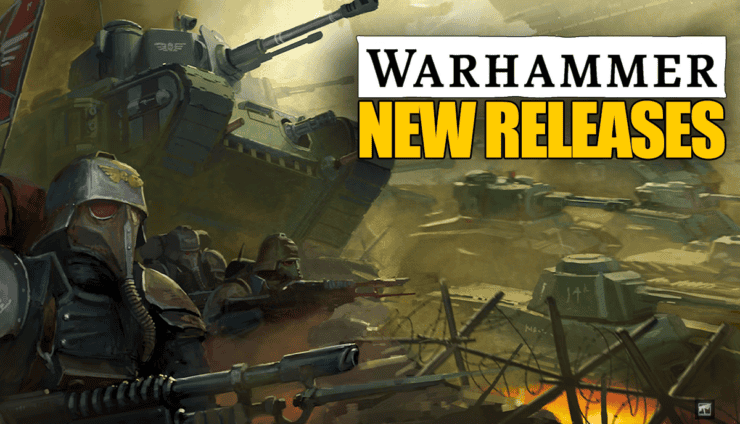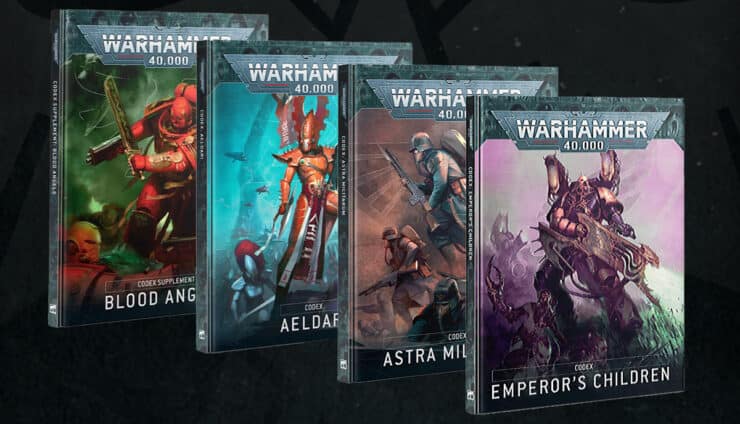Greetings fellow wargamers! My buddy Spence recently acquired a Wraithknight model for his Dark Eldar/allied Eldar army. I mean, how could he resist? At nearly 9″ tall, this model could punt a carnifex like a football.
In a rare shift for GW, the kit contains 4 different arms to explore all the different options for the Wraithknight. Fortunately the model only has a few different builds, which include:
- Ghost Glaive/Shield
- 2 Wraithcannons
- Suncannon and Wraithcannon
As well as the smaller weapons (scatter laser, bright lance, starcannon)
For this tutorial, you will need the following magnets:
1/4″x 1/16″: Six of these
1/8″ x 1/16″: Six of these
3/16″ x 1/16″: One or Three of these, depending on preference
 Let’s start with the shoulder weapons. Now it’s important to note that these weapons could be mounted on the arms as well, but for sake of ease, we liked the shoulder as host points so that’s what this tutorial covers.
Let’s start with the shoulder weapons. Now it’s important to note that these weapons could be mounted on the arms as well, but for sake of ease, we liked the shoulder as host points so that’s what this tutorial covers.
To start, go ahead and make a few guide marks where you want the magnets to be. Aim for the center of the mounting point, or the apex or convex of the part depending on what it is you’re mounting. Drill out a 1/16″ hole on the bottom of both of the sponson weapons (the scatter lasers, in this example). DON’T GLUE THE WEAPON BARREL INTO THE HOUSING. By leaving it loose you’ll be able to swap out the weapons later.
Now grab a 1/8″ bit and drill out the hole a little bit wider. It’s important to go up one stop at a time between drill bits, and rushing or skipping a bit could leader to blowing out the hole for the magnet. Generally, the 1/8″ magnet won’t fit into the hole bored out by the 1/8″ drill bit of the same size. That would be too easy. You’ll probably have to wiggle the drill bit around a little bit to widen the hole, or even in some extreme cases go up an entire extra drill bit size. Go slowly, as too much wiggling could break your bit off in the freshly bored hole and then you’ll have to get that out of the way before you can press on.

Drill out matching holes on the Eldar Wraithknight ‘shoulders’ on the corresponding points. Use the same process as above. Again, go slowly, don’t rush it. If you go too fast you might fracture the bits, and with the bits market about to take a major hit in a few weeks, it’s no guarantee you’ll be able to get a hold of them easily.
Once you’ve got all your holes drilled out, now it’s times to glue, finally. Polarity won’t be much of an issue on this figure, for a few reason. Firstly, it doesn’t have a lot of options you’ll want to later add on, like new wargear or the like. Secondly, the host points are so far apart that the other magnets will likely never pose a polarity risk to your other bits. What I mean by this is that there is ZERO chance that the magnets on one shoulder will be close enough to the other shoulder to rip them out magnetically. The model is just so big that it’s not an issue, unlike, say, a carnifex, where all the dual arm sockets on either side of it’s body are always going to be a problem unless you make sure you match the polarity, so they aren’t fighting each other.
Glue the host magnets down first (by this I mean the shoulder magnets). Don’t use more than you need. Once dry (with the help of a little zipkicker to speed this along) you’ll be able to check the polarity of the attachments. If you do this before the host point is dry, you might get a little glue onto your attachment magnet and then it might just stay glued down. Glue+Magnetization= a really strong bond if you rush things.
Again, the only that thing really matters here is matching the polarity for each point. It doesn’t particuraly matter if the guns are either shoulder match each others polarity. The only real reason I can see this being a problem would be in the case of storage. If you store these bits close together then there is a chance they will attract to each other and eventually that could be a problem. The simply solution here is to separate your magnetized bits the same way you would painted figures . . . in individualized foam cells to protect them.
Next up, the suncannon arm. This is a right arm, and it allows for either a suncannon or wraithcannon to be mounted. So instead of drilling out this arm, we simply glued a 3/16″ x 1/16″ magnet into place. Again, the polarity wasn’t a bit deal here, since it is so far away from any other bit on the model. Once painted up, this magnet will be invisible to the eye.
On the corresponding bits (the wraithcannon and suncannon barrels) we sanding down the square peg so that we could sink our magnets. It’s important to note that while a 3/16″ magnet will fit on this space, it is entirely too big to drill out a hole for this magnet on this bit. So, you have two options: Firstly, you can simply glue the 3/16″ magnet into place. Check the polarity, obviously. This has the advantage of being fast and easy, but since it has no support around it, there is a risk over time of the magnet being pulled off.
The second option, and the one we choose, was to drill out 1/8″ holes for the 1/8″ magnets to be inserted into these bits, much like the scatter lasers above. This gives you extra durability, however, we did find that the wraithcannon barrel (being so long) could use a slightly larger magnet (the 3/16″) to support it. The 1/8″ will work fine, don’t get us wrong, but when you move the model there is a little ‘wiggle’ to it. The solution is a stronger or larger magnet. Or in our case, just being okay with a bit of give when the model moves. Now you know why we suggested having a few extra 3/16″ magnets on hand for this tutorial. Those larger magnets will create a stronger pull, but they’ll just be glued into space. They’ll paint up fine, but they may (over time) come lose.
When attaching or detaching magnets, always break the yoke to the side rather than pulling away directly. Think of it like if the Great Unlean One fell down. With the GUO being so fat, wouldn’t it be easier for the GUO to roll onto it’s side and stand up that way, rather than just trying stand straight up. See force (in this case gravity, in the case of the magnets, magnetic force) is being exerted on the subject (the magnets). That force is always exerting pull on those magnets. When you pull the magnetized bit away, it’s a bit like the GUO trying to stand up. It’s easier to roll to the side (breaking the yoke). It also exerts less force on the magnet, and thus your magnets will last longer (at least stay attached)
The limbs and the torso were the trickiest parts. This par required 1/4″ magnets, which are very large for magnets used on miniatures. For the arms we simply glued these into the sockets, being sure to check polarity as we went. We didn’t green stuff them down or anything, since you’d never see them and if they came out a little glue will solve all our problems.
For the torso, however, the problem was three fold. Firstly, those shoulders are hollow. So drilling is fine, but there’s nothing for the magnet to be supported on.
Secondly, those shoulders are in 2 parts. So while drilling the halves might come apart, and make it harder to get a smooth hole. Like trying to drill a hole between two coffee tables that match up end to end perfectly.
Finally, the magnet had to be big enough to support the weight of the arms, BUT the magnets we used are almost flush with the shoulder itself. So we couldn’t drill out too fast, or too hard. For all the above reasons. Mostly, we were trying to avoid a blow out. That’s when you drill the hole too quicklly and you shred the bit you’re working on. In this case, the shoulder halves.
So, starting with a 1/16″ bit, we drilled out the center of each shoulder. Then working up a bit at a time (5/64, 3/16, etc) we eventaully got up to 1/4″ Even then we had to use an exacto knife to help whittle out the inside of the shoulder socket until it was a clean fit.
Once we had our hole, we glued the magnet into place, between the two halves. It still wasn’t perfectly flush, SO we simply twisting it so that the seam was facing the top of the model (facing the shoulder pad lining). This way it would never be seen and thus never become an eyesore.
Finally, we mixed up a little grey stuff and applied it to the inside of the socket, using it like a ballast to support the magnet. By pressing it firmly up against the magnet and filling the inside of the shoulder socket, we created an artificial back for the magnet, so that it would have added support. Once glued down you’d never notice it anyway!
All told this project took about 2 hours, so don’t rush things. Take your time, be patience, and pretty soon you’ll have every option for your Wraithknight there is!
For a video fully detailing this processing, check it out below!
My name is Caleb and I am the Owner of White Metal Games! Be sure to check us out for any painting, assembly or magnetization project you have! Until next time, PUT YOUR MINIS WHERE YOUR MOUTH IS!
Happy Wargaming
Caleb Dillon

